On Sunday 26th February 2017 six members of the Kent Geologists Group joined Anne Padfield for
a brief walk around the Dryhill Country Park to study the exposed geology. Until the 1950s the
area was a quarry owned by Gallagher and worked for Kentish Ragstone.
Ragstone is a dark grey sandy limestone in which clay and greensand have been cemented together
by calcite to form a very hard, durable rock that has been used extensively for buildings in
South East England for over a thousand years. The Tower of London is a notable example of its
use! Greensand is sand that contains the green mica mineral 'Glauconite', Iron Potassium
Phyllosilicate, (K, Na)(Fe3, Al, Mg)2(Si, Al)4O10(OH)2
Ragstone was formed from greensand that was deposited in a shallow sea some 110 to 115 million
years ago as part of the 'Hythe' formation in the Aptian stage of the Lower Cretaceous period.
The term 'Ragstone' is thought to derive from the rock being very hard and difficult to work
before the development of modern powered machinery, thereby resulting in a 'ragged' worked surface.
In the Hythe formation the layers of ragstone are separated by layers of 'Hassock' a softer
sandy deposit, giving the exposed strata their characteristic 'striped' appearance.
Due to deformation the deposited layers have been 'crumpled' to produce anticlines (the upturned
basin appearance) and synclines (the sagging appearance). There are excellent exposures of both
to be seen at Dryhill that can be closely examined.
After gathering for a brief introduction we headed southwards into the first large open area.
The site originally maintained by Kent County Council, but no longer so, is becoming a little
overgrown so one has to be wary of brambles when getting close to the rock exposures.
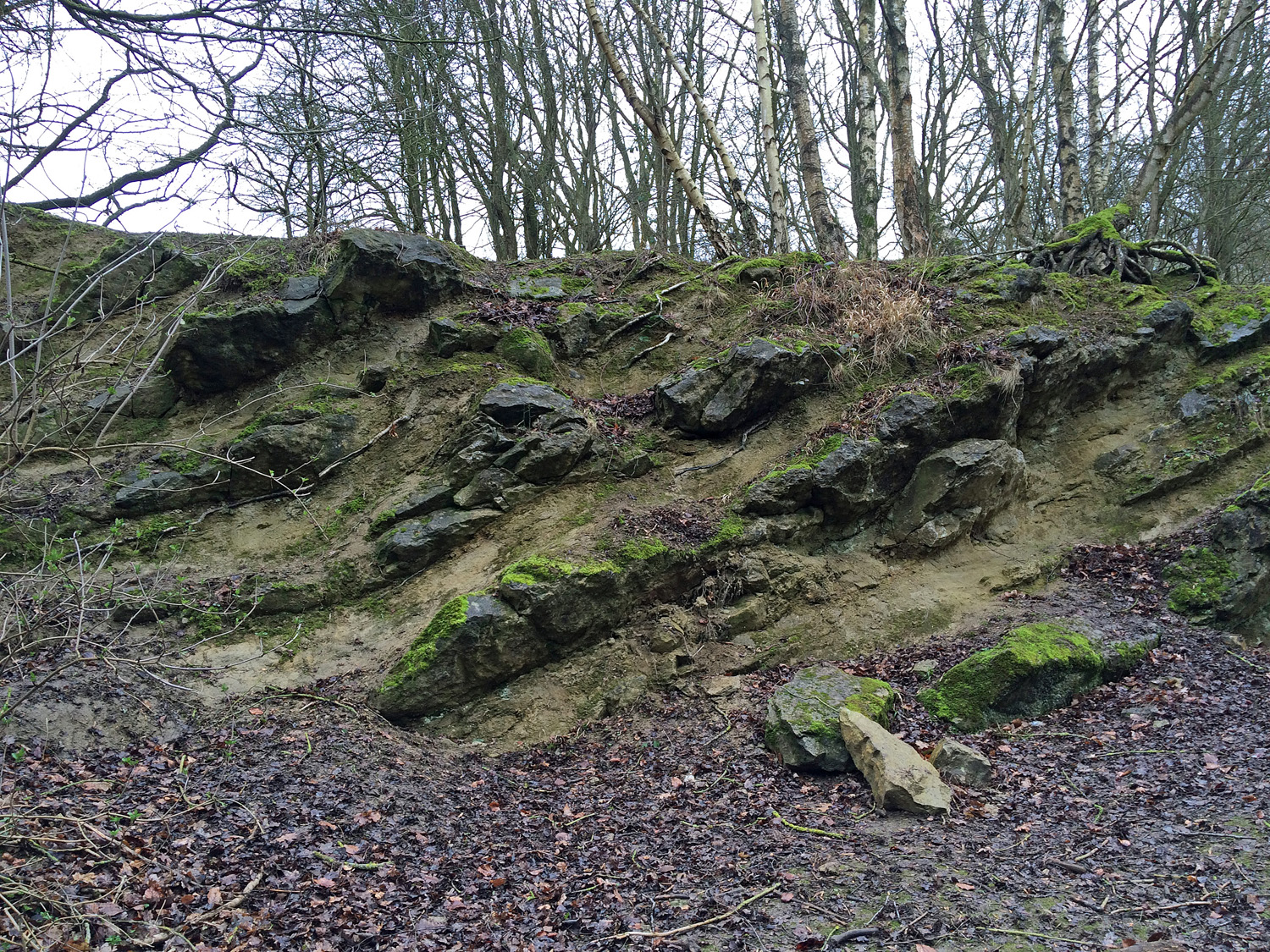
|
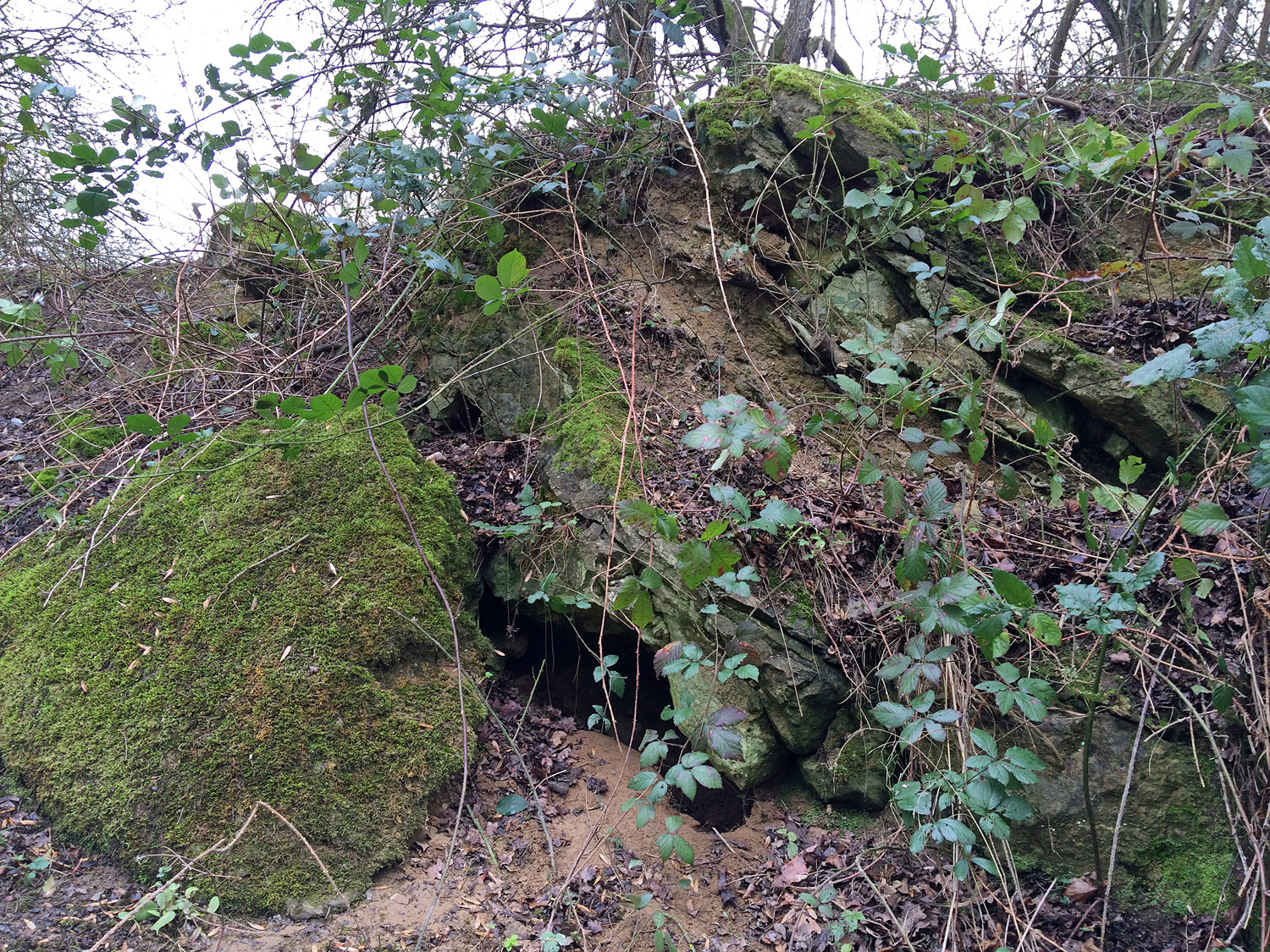
|
Fig 1. Rag and Hassock anticline (left limb).
|
Fig 2. Rag and Hassock anticline (right limb).
|

|
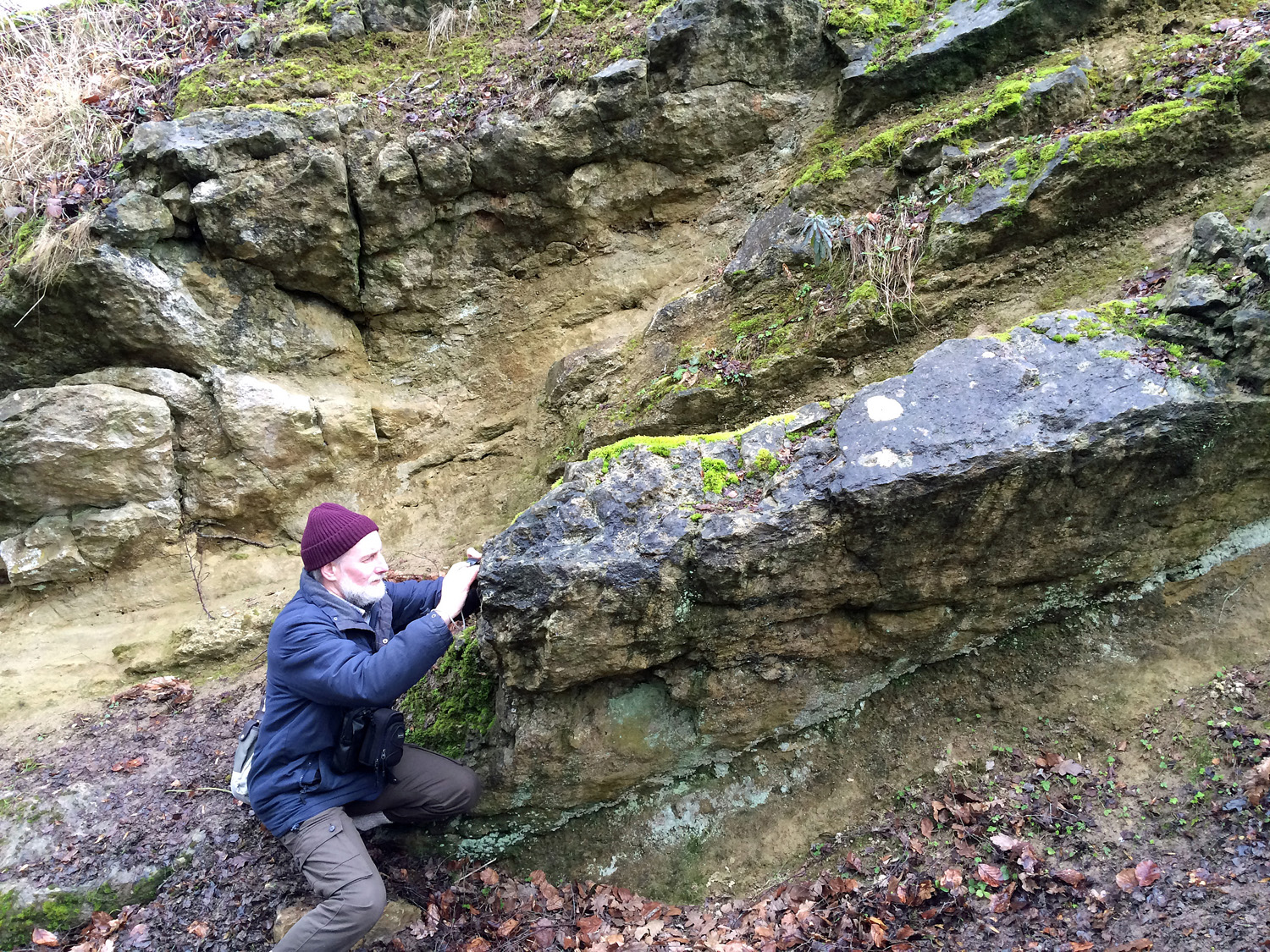
|
Fig 3. Hassock - a closer view.
|
Fig 4. Examining the Ragstone more closely
|
Anne Padfield had come well prepared with compass, inclinometer etc. and,
after explaining the geology, showed us how to make accurate measurements
of the dip angles i.e. normal to the rock surface.
An easy way to find the correct position for the inclinometer, without
discussing the mathematics, is to rotate the inclinometer on the flat rock
surface until a maximum reading is achieved.
Up close we were able to see clearly the difference between the dark,
very hard ragstone and the lighter coloured, friable ‘Hassock'.
Return to Top
Moving to our right and further into the cleared area, we came to our
second rock exposure. Standing well back from the rock face we were able
to see, from left to right, that the rock strata descended, reached a
minimum and then climbed again. We were looking at a syncline.
Combined with the earlier anticline this was clear indication of the 'crumpling'
of the rock strata. Vertical cracks in the rocks were a further indication of
the enormous forces caused by the colliding plates that caused the folding
of the layers.
Returning towards the car park we saw and photographed several rock faces
‘peppered’ with holes caused by mining bees. They chew out weakly cemented
particles with their jaws (one can achieve the same effect with a sharp implement
like a pin). Nevertheless, it seems incredible that these tiny insects can
remove so much rock.
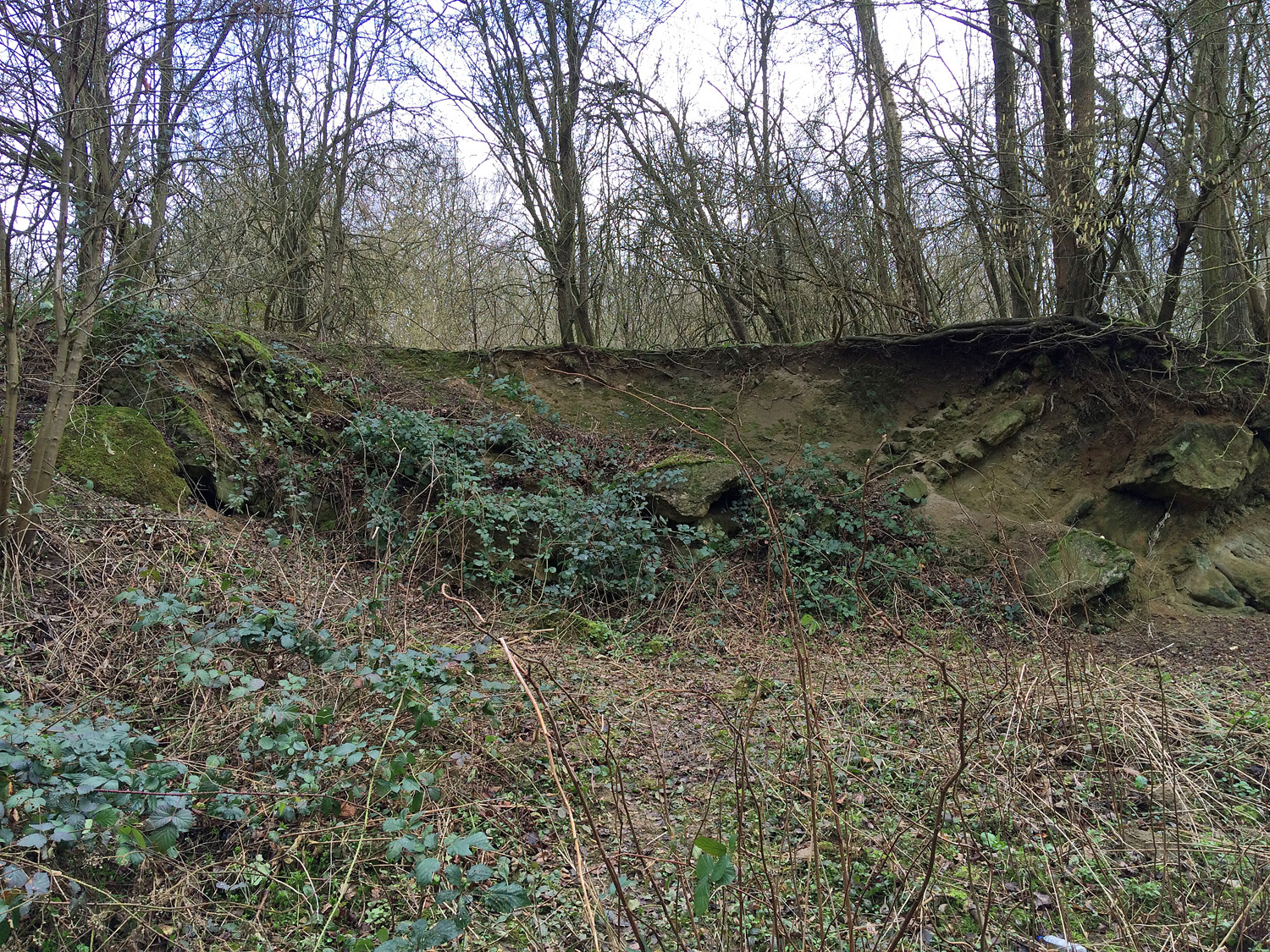
|
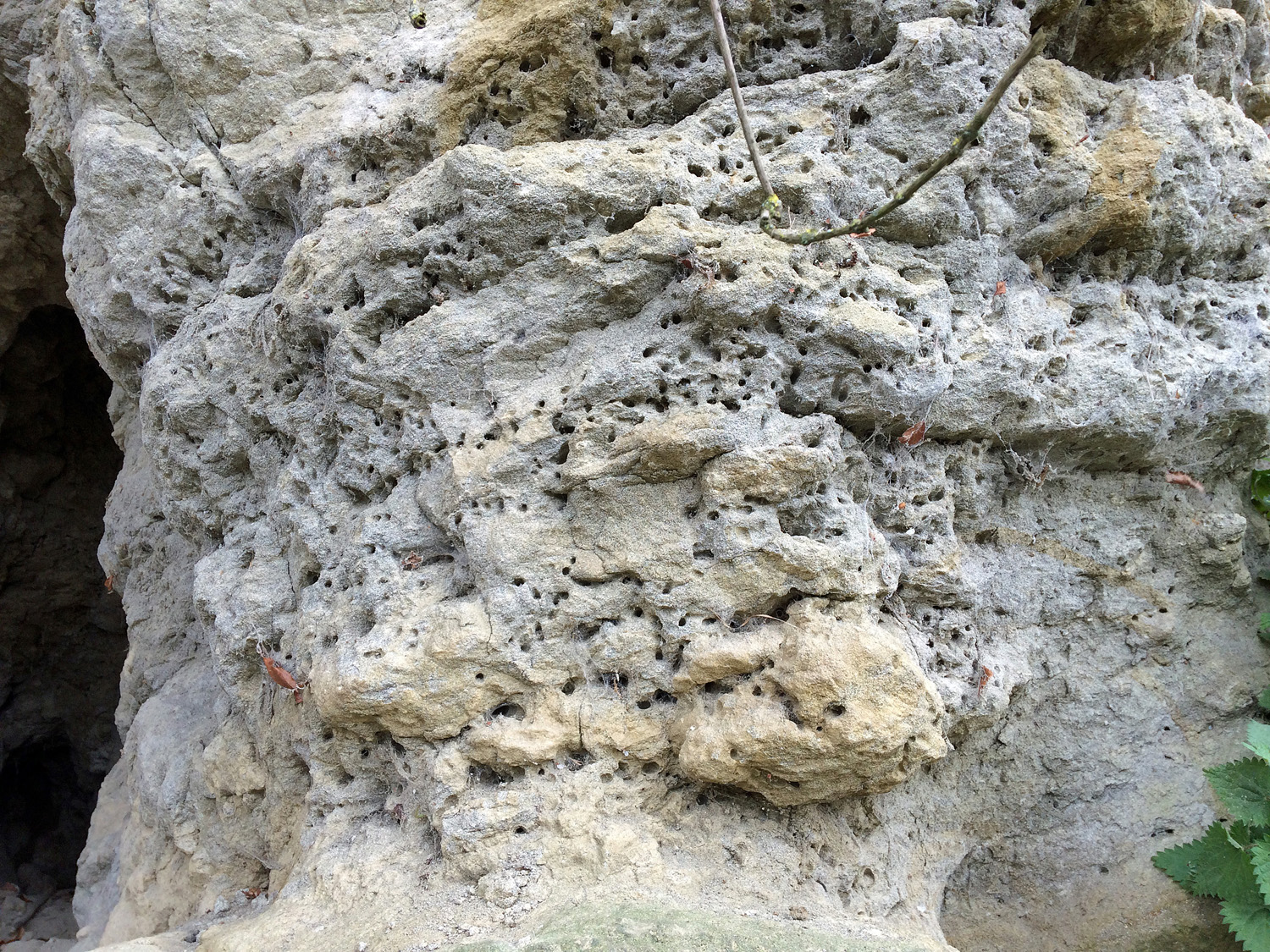
|
Fig 5. Syncline at second exposure.
|
Fig 6. Mining Bee Holes.
|
For further information it is recommended that the reader goes to the
Gallagher website:-
[Select 'Our Services', enter 'Kentish Ragstone' in the
search box, then select 'Kentish Ragstone' in the drop-down list.]
Access and Safety
The former quarry was initially converted into a country park for the public and
maintained by Kent County Council. It then posed little or no hazard.
However, the council no longer maintains the site which is beginning to
be overgrown in the less frequented areas of the park where the exposed rock
faces can be seen.
Visitors wishing to get close the 'rag and hassock' exposures to examine them
must be alert for tree roots, also twigs and bramble overhanging the paths
and rock faces; they can grow quickly in summer.
Appropriate, sensible clothing and footware should be chosen by visitors wishing
to examine the exposed rock faces.
Site Entrance: Heading westwards from Sevenoaks on the A25 the entrance lane
to Dryhill is the first turning left after crossing the M25/A21 junction. Note: the A25 here
is dual carriageway, it is not possible to turn right after leaving Brasted in
an easterly direction.
Note: There are two small car parks on the right. The rock exposures are in the open
area beyond the second.